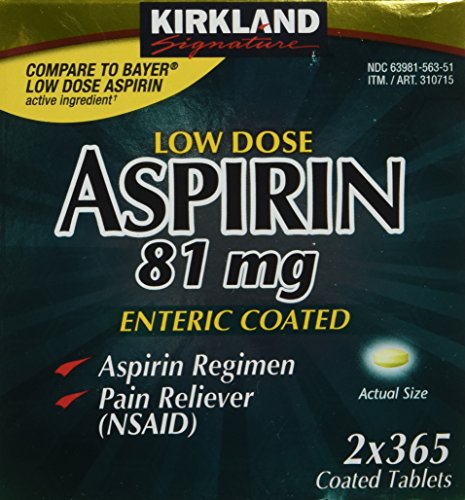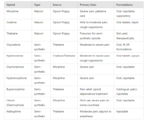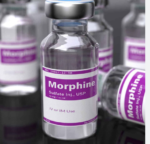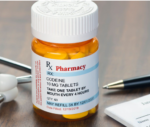Over-the-Counter Pain Relievers
Over-the-counter (OTC) pain relievers include:
- Acetaminophen (Tylenol)
- Nonsteroidal anti-inflammatory drugs (NSAIDs), including ibuprofen(Motrin, Advil) or naproxen(Aleve, Naprosyn)
Both acetaminophen and NSAIDs reduce fever and relieve pain caused by muscle aches and stiffness, but only NSAIDs can also reduce inflammation (swelling and irritation). Acetaminophen and NSAIDs also work differently. NSAIDs relieve pain by reducing the production of prostaglandins, which are hormone-like substances that cause pain. Acetaminophen works on the parts of the brainthat receive the “pain messages.” NSAIDs are also available in a prescription strength that can be prescribed by your physician.
Using NSAIDs increase the risk of heart attack or stroke and have also been known to cause stomach ulcers and bleeding. They can also cause kidney problems.
Topical pain relievers are also available without a doctor’s prescription. These products include creams, lotions, or sprays that are applied to the skin in order to relieve pain from sore muscles and arthritis. Some examples of topical pain relievers include Aspercreme, Ben-Gay, Icy Hot, and Capzasin-P.
Prescription Pain Relievers
Prescription pain relievers include:
- Corticosteroids
- Opioids
- Antidepressants
- Anticonvulsants (anti-seizure medications)
- Nonsteroidal anti-inflammatory drugs (NSAIDs)
- Lidocaine patches
Prescription corticosteroids provide relief for inflamed areas of the body by easing swelling, redness, itching and allergic reactions. Corticosteroids can be used to treat allergies, asthma and arthritis. When used to control pain, they are generally given in the form of pills or injections that target a certain joint. Examples include: prednisone, prednisolone, and methylprednisolone.
Opioids are narcotic pain medications that contain natural, synthetic or semi-synthetic opiates. Opioids are often used for acute pain, such as short-term pain after surgery. Some examples of opioids include:
Opioids are effective for severe pain and do not cause bleeding in the stomach or other parts of the body, as can some other types of painrelievers. It is rare for people to become addicted to opioids if the drugs are used to treat pain for a short period of time.

Antidepressants are drugs that can treat pain and/or emotional conditions by adjusting levels of neurotransmitters (natural chemicals) in the brain. These medications can increase the availability of the body’s signals for well-being and relaxation, enabling pain control for some people with chronic pain conditions that do not completely respond to usual treatments. Research suggests antidepressants work best for neuropathic or nerve pain.
Chronic pain conditions treated by low-dose antidepressants include some types of headaches (like migraines) and menstrual pain. Some antidepressant medications include:
- Selective serotonin reuptake inhibitors (SSRIs) such as citalopram(Celexa), fluoxetine (Prozac), paroxetine (Paxil), and sertraline (Zoloft)
- Tricyclic antidepressants such as amitriptyline, desipramine(Norpramin), doxepin (Silenor), imipramine (Tofranil), and nortriptyline(Pamelor)
- Serotonin and norepinephrine reuptake inhibitors (SNRIs) such as venlafaxine (Effexor) and duloxetine (Cymbalta)
Anticonvulsants are drugs typically used to treat seizure disorders. Some of these medications are shown to be effective in treating pain as well. The exact way in which these medicines control pain is unclear but it is thought that they minimize the effects of nerves that cause pain. Some examples include carbamazepine (Tegretol), gabapentin (Neurontin), and pregabalin (Lyrica).
Pain Relief Drug List and Pain Medication List
Examples of nonprescription pain medications include:
- Acetaminophen (Tylenol)
- Aspirin
- Ibuprofen (Advil, Motrin IB)
- Naproxen (Aleve)
Examples of prescription medications include the following:
Nonsteroidal anti-inflammatory drugs (NSAIDs)
- Diclofenac (Voltaren)
- Diflunisal (Dolobid)
- Etodolac (Lodine)
- Fenoprofen (Nalfon)
- Flurbiprofen (Ansaid)
- Ibuprofen (Motrin)
- Indomethacin (Indocin, Indo-Lemmon)
- Ketorolac (Toradol)
- Mefenamic acid (Ponstel)
- Meloxicam (Mobic)
- Nabumetone (Relafen)
- Naproxen (Naprosyn, Anaprox)
- Oxaprozin (Daypro)
- Piroxicam (Feldene)
- Sulindac (Clinoril)
- Tolmetin (Tolectin)
COX-2 inhibitor
Opioid analgesics
- Acetaminophen with codeine (Tylenol #2, #3, #4)
- Buprenorphine (Butrans)
- Fentanyl transdermal patches (Duragesic)
- Hydrocodone with acetaminophen (Lortab Elixir, Vicodin)
- Hydrocodone with ibuprofen (Vicoprofen)
- Hydrocodone (Zohydro)
- Hydromorphone (Exalgo)
- Meperidine (Demerol, Merpergan)
- Methadone (Dolophine)
- Morphine and morphine sustained release (MS-Contin, Avinza, Kadian)
- Oxycodone sustained release (OxyContin)
- Oxycodone with acetaminophen (Percocet)
- Oxycodone with aspirin (Percodan)
- Oxycodone with ibuprofen (Combunox)
- Oxymorphone (Opana, Opana ER)
- Pentazocine (Talwin,)
- Propoxyphene with aspirin, propoxyphene with acetaminophen
- Tapentadol (Nucynta, Nucynta ER)
- Tramadol, tramadol with acetaminophen (Ultram, Ultracet)
Mixed opioid agonist/antagonists
- Pentazocine/naloxone (Talwin NX)
- Butorphanol
- Nalbuphine (Nubain)
Antidepressants
- Amitriptyline (Elavil)
- Bupropion (Wellbutrin)
- Desipramine (Norpramin)
- Duloxetine (Cymbalta)
- Imipramine (Tofranil)
- Venlafaxine (Effexor)
Anticonvulsants
- Carbamazepine (Tegretol)
- Clonazepam (Klonopin)
- Gabapentin (Neurontin)
- Lamotrigine (Lamictal)
- Pregabalin (Lyrica)
- Tiagabine (Gabitril)
- Topiramate (Topamax)
Fibromyalgia medication
- Milnacipran (Savella)
Anxiolytics
- Alprazolam (Xanax)
- Diazepam (Valium)
- Lorazepam (Ativan)
- Triazolam (Halcion)
Muscle relaxants
- Baclofen (Lioresal)
- Carisoprodol (Soma)
- Chlorzoxazone (Parafon Forte, DSC)
- Cyclobenzaprine (Flexeril)
- Dantrolene (Dantrium)
- Metaxalone (Skelaxin)
- Methocarbamol (Robaxin)
- Orphenadrine (Norflex)
- Tizanidine (Zanaflex)
Corticosteroids
- Cortisone
- Prednisone
- Prednisolone
- Dexamethasone
- Methylprednisolone (Medrol, A-Methapred, Depo Medrol, Solu Medrol)
- Triamcinolone (Allernaze, Aristospan 5 mg, Aristospan Injection 20 mg, Kenalog 10 Injection, Kenalog Nasacort AQ)
Pain Medications, Pain Relief, and Pain Management







